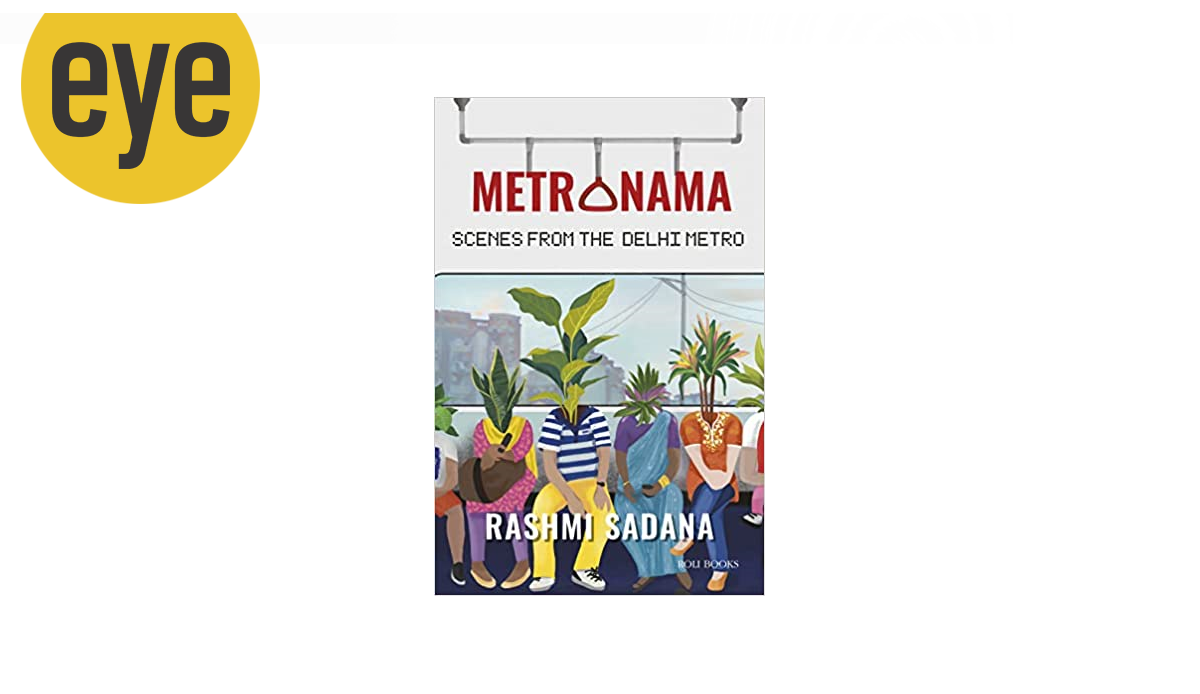 Metronama: Scenes from the Delhi Metro by Rashmi Sadana; Roli books; 264 pages; Rs 495 (Source: Amazon.in)
Metronama: Scenes from the Delhi Metro by Rashmi Sadana; Roli books; 264 pages; Rs 495 (Source: Amazon.in)The descriptions of a faceless crowd – a testimony of the individual in a public space and their relationship with it – Rashmi Sadana’s Metronama: Scenes from the Delhi Metro captivates the reader with casual intimacy and the astute observations in the narration, immediately. The book is a product of 10 years of labour and research and explores New Delhi’s Metro service. The work is a rich account of the architectural, economic, social and political processes that produced the Metro and details its implication for the millions that inhabit the city.
Through interviews with public officials, civil-society organisers, architects and engineers, she lays bare the process and incentive behind the Metro system and, by extension, the urban policy approach in the capital. The author functions as the invisible hand, while the vehicle of the narration becomes the ones she interviews, or expertly observes and absorbs into the narration. The Metro itself is the overarching vehicle for conversation. Through it, she explores disability, class, caste and gender in Delhi and tries to answer the question: “Who does the Metro help?”
The contracting and expanding nature of the city, the urban and peri-urban divide in connectivity, displacement of thousands of homes for the development of the Metro system and the overarching economic and ideological drivers behind the planning earn an intricate exploration in the book.
Class conflict is punctuated through interviews with RWA members of upper-middle class homes to trade unions of bus drivers. Through her decade-long journey, the author sets out to examine the nature and role of the Delhi metro in reference to the city. She explores how the metro interacts with the infrastructure of Delhi; whether the structure seems plopped on or integrated into its surroundings. More importantly, it attempts to understand whether the metro functions as a divider or consolidator for the populace. In the space it occupies, who does it bring along and who gets discarded and illegalised? As Dunu Roy, social scientist and one of the interviewees, articulates, the structure for all the promise it offers, seems to be in service of neoliberal concepts of development, with the focus being the middle class. In the process, marginalisation of the urban and peri-urban poor seems apparent. The conclusion to the question of integration is left open-ended by Sadana, leaving the readers to their own devices to gauge the Metro’s value.
Subscriber Only Stories
For a Dilliwala, the book is bound to evoke nostalgia. It recreates the city on the pages with its poetic, colourful narrative, which, even as it meanders into an array of experiences and
areas of expertise, arrives at the argument wonderfully. Written in crisp, short chapters, replete with visually stimulating commentary, the book is an easy, yet thought-provoking read. Metronama is neither laudatory, nor berating. It is not instructive, it does not tell you what to feel. It’s informative. Most importantly, the book feels like a personal diary by Dilli, and all that makes it what it is.
- The Indian Express website has been rated GREEN for its credibility and trustworthiness by Newsguard, a global service that rates news sources for their journalistic standards.

